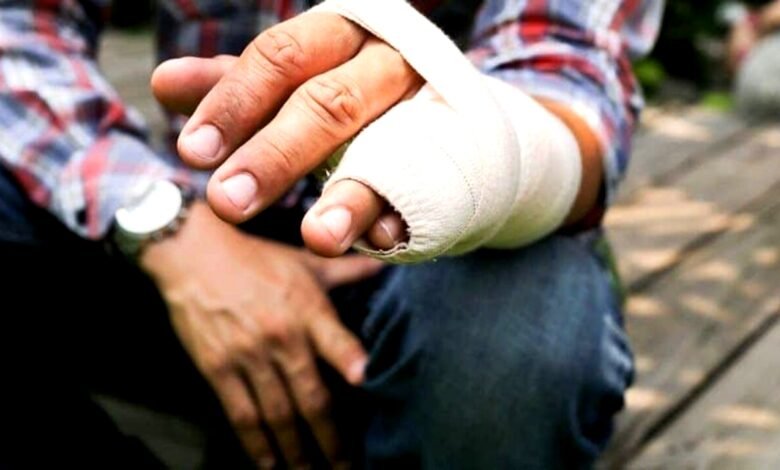
What to Do If You’re Injured Due to Someone Else’s Negligence: A Step-by-Step Guide
Injured due to negligence? Learn the steps to protect your rights, seek fair compensation, and move forward with confidence with proper legal support.
Accidents happen every day—on the road, at work, in public places, or even in someone’s home. While some are unavoidable, others occur because someone failed to act responsibly. If you’ve been injured due to another person’s negligence, you may be entitled to compensation. However, securing justice requires a clear understanding of the steps to take immediately after the incident and in the days and weeks that follow.
This article outlines the essential process for protecting your rights and pursuing a personal injury claim.
Step 1: Seek Immediate Medical Attention
Your health is the top priority. Even if your injuries seem minor, it’s crucial to get evaluated by a medical professional. Some injuries—like concussions, internal bleeding, or soft tissue damage—may not be immediately apparent.
Medical records also serve as critical evidence in a personal injury case. They document the extent of your injuries, the treatment required, and the connection between the accident and your condition.
Step 2: Report the Incident
Depending on where the accident occurred, you should report it to the appropriate authority:
- Car accident: Call the police and file an accident report.
- Workplace injury: Notify your supervisor or HR department.
- Slip and fall in a store or public place: Inform the manager or property owner.
Make sure the report is accurate and includes key details. Request a copy for your records.
Step 3: Document Everything
Evidence is the foundation of any successful personal injury claim. Start gathering documentation as soon as possible:
- Photos and videos of the accident scene, injuries, and any contributing hazards.
- Witness statements and contact information.
- Receipts and bills for medical treatment, medications, and related expenses.
- Journal entries detailing your pain, emotional distress, and how the injury affects your daily life.
The more thorough your documentation, the stronger your case will be.
Step 4: Avoid Speaking to Insurance Adjusters Without Legal Advice
Insurance companies often reach out quickly after an accident. While they may seem helpful, their goal is to minimize payouts. Be cautious about what you say, and avoid signing any documents or accepting settlements without consulting an attorney.
Statements made to adjusters can be used against you later. It’s best to let a legal professional handle communications on your behalf.
Step 5: Consult a Personal Injury Attorney
Navigating the legal system can be overwhelming, especially when you’re recovering from an injury. A qualified personal injury attorney can:
- Evaluate the strength of your claim
- Determine liability and identify responsible parties
- Handle negotiations with insurance companies
- Represent you in court if necessary
Most personal injury lawyers offer free consultations and work on a contingency fee basis, meaning they only get paid if you win your case.
Step 6: Understand the Legal Elements of Negligence
To succeed in a personal injury claim, you must prove that the other party was negligent. This involves establishing four key elements:
- Duty of Care: The defendant had a legal obligation to act reasonably to prevent harm.
- Breach of Duty: They failed to uphold that duty.
- Causation: Their actions (or inaction) directly caused your injury.
- Damages: You suffered actual harm—physical, emotional, or financial.
Your attorney will help gather evidence to support each of these elements.
Step 7: File a Claim Within the Statute of Limitations
Every state has a time limit—known as the statute of limitations—for filing personal injury claims. This period typically ranges from one to three years from the date of the accident. Missing this deadline can result in losing your right to compensation.
Acting promptly ensures your case remains valid and that evidence is preserved.
Step 8: Be Prepared for Settlement or Trial
Many personal injury cases are resolved through settlement negotiations. If both parties agree on a fair amount, the case can be closed without going to court. However, if a settlement isn’t reached, your attorney may recommend filing a lawsuit.
Litigation can be lengthy, but it may be necessary to secure the compensation you deserve. Your lawyer will guide you through each stage, from discovery to trial.
Step 9: Focus on Recovery
While your legal team handles the case, prioritize your physical and emotional recovery. Follow your doctor’s advice, attend therapy if needed, and lean on your support system. Healing takes time, and your well-being is just as important as the outcome of your claim.
Conclusion
Being injured due to someone else’s negligence can be a life-altering experience. But you don’t have to face it alone. By taking the right steps—from seeking medical care to consulting an attorney—you can protect your rights and pursue fair compensation.
Whether the accident occurred on the road, at work, or in a public space, the law is designed to hold negligent parties accountable. With the right approach and legal support, you can move forward with confidence and reclaim control over your life.







